I LOVE zinnia flowers! Plant some if you want to add a pop of color to your garden this year. These bright, cheerful flowers are not only one of the easiest annuals to grow, but they also come in a wide variety of colors and sizes. Learn how to grow zinnias from seed to bloom for stunning cut flowers all summer.
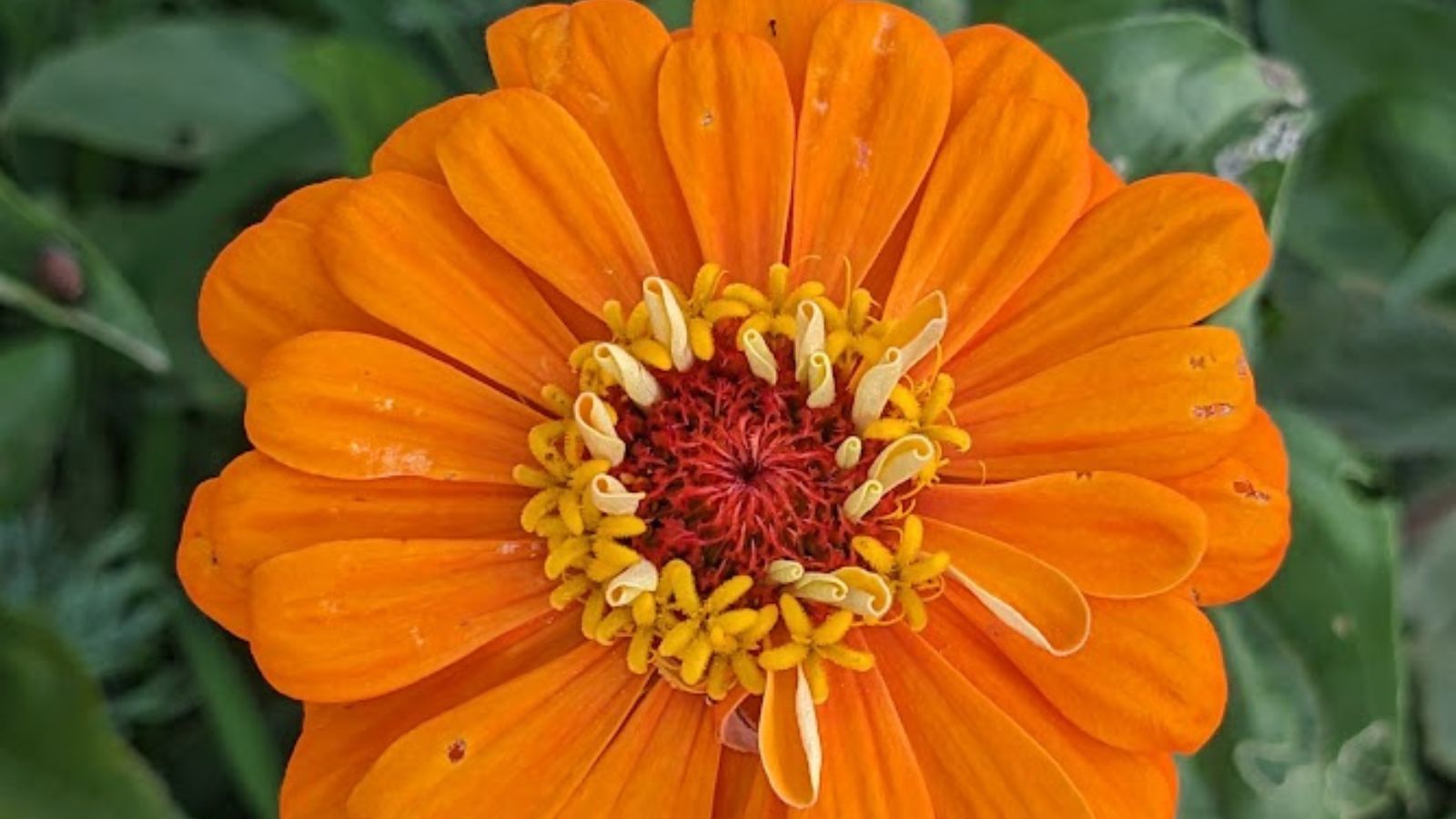
Zinnias are in the Asteraceae family, like daisies, dahlias, and even lettuce. More specifically, zinnias are in the Heliantheae tribe, just like sunflowers and sunchokes, all of which have petals reminiscent of the sun. The most common type of zinnia flowers is Zinnia elegans, although many different cultivars of zinnia are available.
They come in a wide range of colors, sizes, petal types, and more, giving these annual flowers tons of visual interest. They make excellent cut flowers and are a perfect addition to any cut flower garden.
How to Grow Zinnias
Zinnias are native to Mexico, which is a great way to remember the growing conditions they need. They love sunshine, well-draining soil, and warmer climates, although you can certainly grow healthy plants in cooler climates too.
Sunlight: Choose a spot with full sun for bright, healthy blooms.
Soil requirements: Zinnias need well-draining soil with some organic matter. They don’t tolerate wet roots very well.
Water: Zinnia plants prefer consistent soil moisture, so water deeply several times each week. Zinnias don’t tolerate freezing conditions, so only plant them when the soil has reached at least 60 degrees F at night.
Choose the right seeds
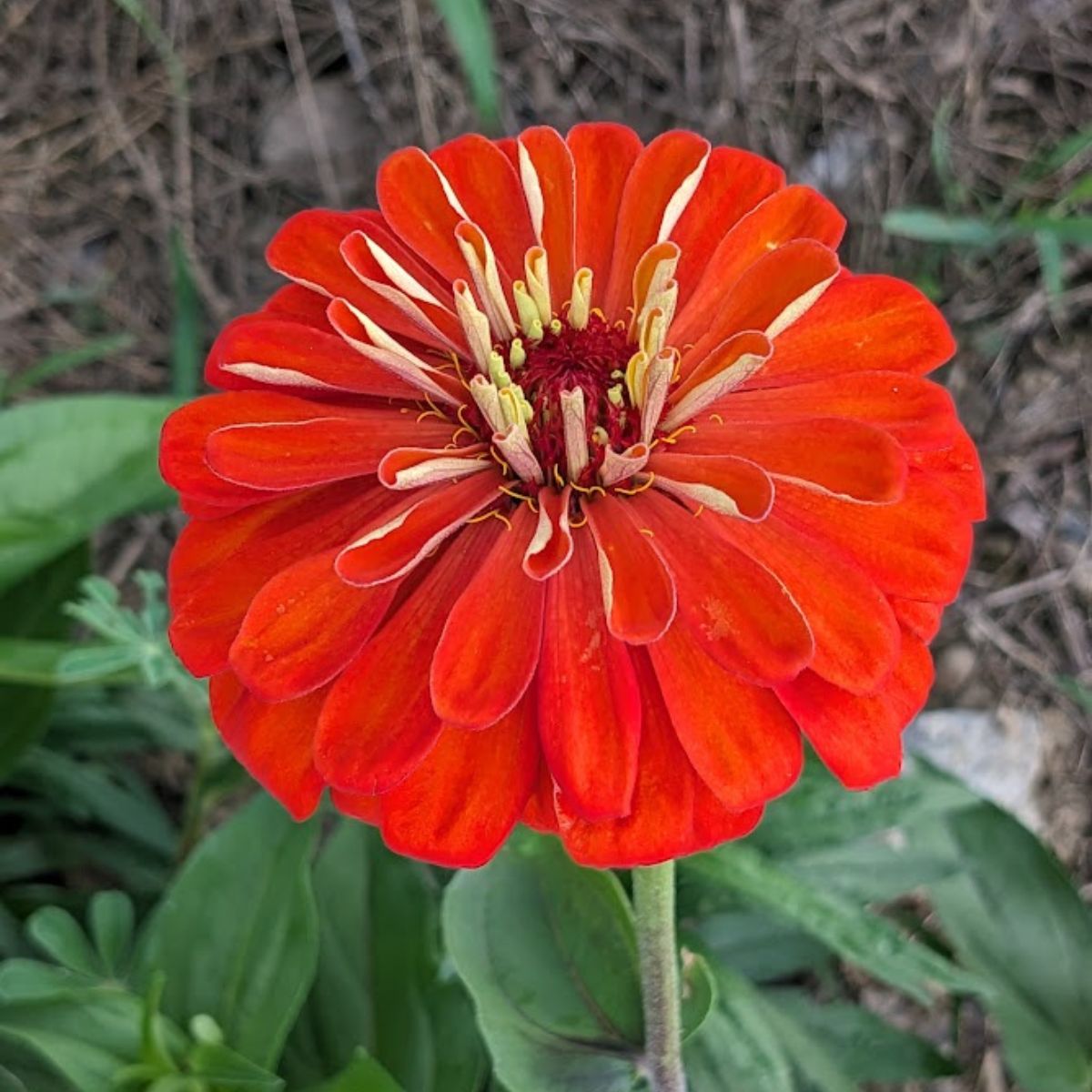
There are so many different types of zinnias. Spend some time dreaming about the summer flowers you’d like to find the right varieties.
Color: Zinnias come in pure white or vibrant colors like bright pink, purple, orange, yellow, and lime green. Choose a variety that suits your style. There are also bicolor and variegated blooms for beautiful flowers that catch the eye.
Size: Small varieties reach less than a foot and tall plants reach 4 feet tall.
Bloom time: Plant different varieties for color from early summer through fall.
Type of flower: There are many types of zinnias, including single, semi-double, and true double blooms. Different petal shapes look like feathers or cactus spikes, too.
Look for high-quality seeds from a reputable source. You can choose between heirloom or hybrid varieties, each with its unique characteristics. Store excess seeds in a cool, dry place to save them for next year.
Best varieties of zinnias for planting
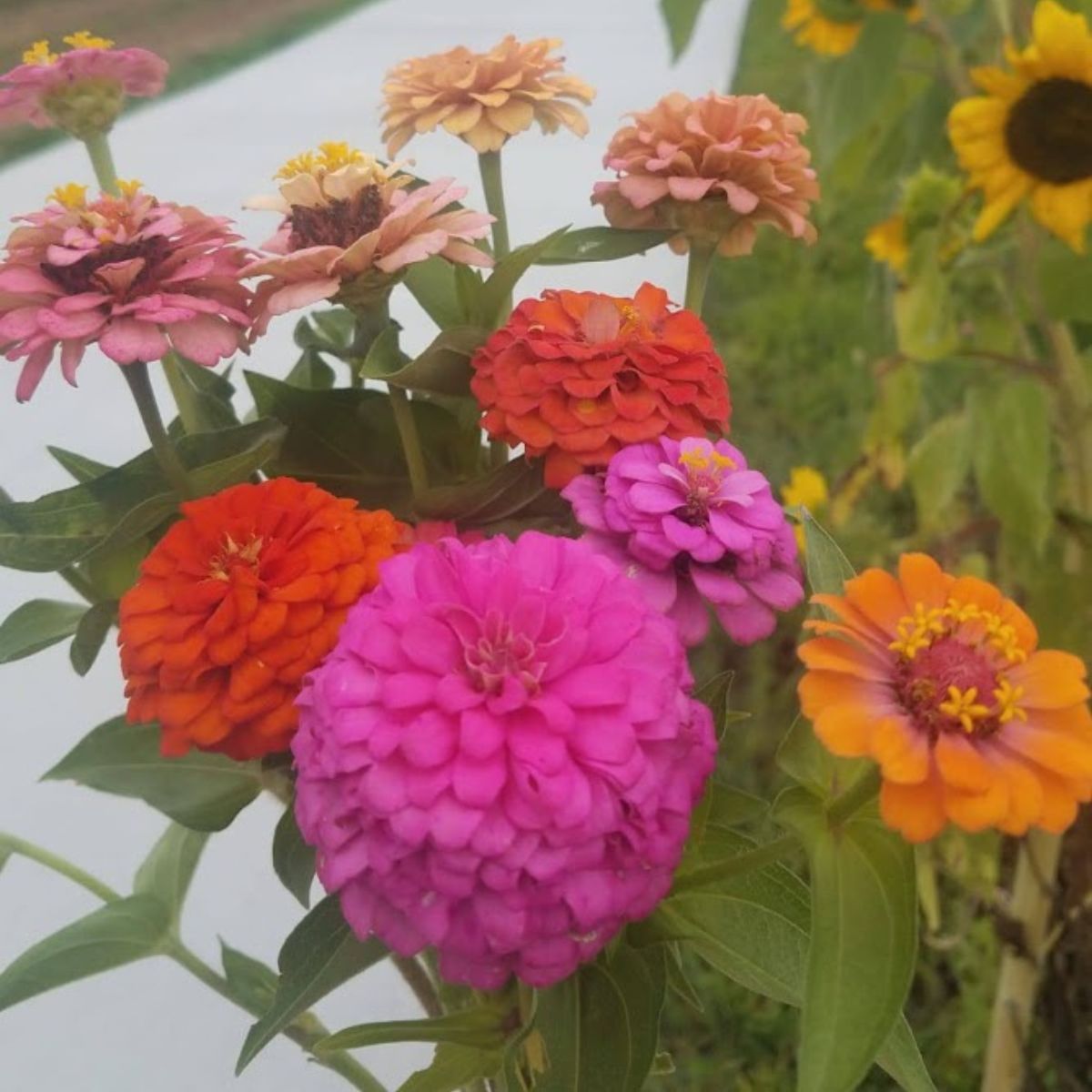
Although so many zinnia varieties are available, these are some of the best types to grow in any garden.
Short zinnias (Zinnia haageana)
If you want a colorful bed filler, try dwarf varieties that never exceed a foot tall.
Giant zinnias
If you love giant dahlias and other dramatic flowers, giant varieties like Benary’s Giant Series will be perfect.
- Benary’s Giant Lime
- California Giant
- Big Red
Tall zinnias
Especially if you plan to cut flowers for bouquets, taller varieties are perfect for filling a vase.
- State Fair Mix
- Uproar Rose
- Oklahoma Mix
How to plant zinnia seeds
You can either direct sow zinnia seeds in late spring or early summer when temperatures begin to rise or start them indoors to get a head start. They’re also commonly available at garden centers for easy planting.
- Prepare the bed. Remove any weeds, rocks, or debris from your chosen planting area. Zinnias prefer well-draining soil, so mix in sand or compost if your soil holds water.
- Test your soil’s pH levels. Zinnias thrive in slightly acidic soil with a pH between 5.5 and 7.0. You can purchase a soil testing kit at your local garden center or online.
- Amend the soil. Once you have tested your soil, amend it as necessary by adding lime to raise the pH or sulfur to lower it.
- Loosen the soil. Finally, use a garden fork or tiller to loosen your garden soil to help your zinnia roots to grow deeply.
- Plant seeds. Plant zinnia seeds approximately 1/4 inch deep.
- Water. Give your seeds a deep watering and keep the soil moist (but not soggy) until germination.
After sprouting, thin zinnia seedlings to approximately 6-12 inches apart for good airflow.
Can you start zinnia seeds indoors?
If you have a short growing season and want healthy zinnia plants as soon as possible, start seeds indoors at least a month before your last frost date. Sow zinnia seeds into a peat pot or other container with rich potting soil. Provide consistent light and a heat mat if needed.
When soil temperatures rise, harden off your seedlings before planting them in your garden beds. Gradually increase the time they spend outside over 3-5 days until they can spend several nights outdoors uncovered.
After the danger of frost has passed, transplant your young plants directly into your garden following the instructions above.
Caring for your zinnias
With the right growing conditions and sufficient water, zinnias are easy to grow. Try these tips to keep your plants happy and healthy.
Fertilize
Keep your zinnias well-fed. Fertilize them with a balanced, all-purpose fertilizer every four to six weeks to keep them healthy and encourage blooming.
Watch for pests & diseases
Another important aspect of caring for your zinnias is to keep an eye out for pests and diseases. Common pests that can affect zinnias include aphids, spider mites, Japanese beetles, and whiteflies. If you notice any signs of pests, treat your plants with an appropriate insecticide.
Like many plants, they’re susceptible to powdery mildew, so try to water them from the base of the plant (not overhead) in the morning so any excess moisture can dry off during the heat of the day. You can also ensure good air circulation by planting your zinnias 6 inches to 2 feet apart and thin seedlings to ensure they aren’t growing too closely.
Remove dead flower blooms
Regularly deadheading your zinnias can encourage more blooms and keep your plants tidy.
Pinch off any spent blooms and discard them. Some varieties will only produce new blooms if the spent flower heads are removed, so this is a good practice.
Growing zinnias from seed can be a fun and fulfilling experience with tons of beautiful blooms as the reward. With these simple steps, anyone can enjoy the beauty of zinnias in their garden. Find some fun varieties to try this year and get planting!
Zinnia Pictures For Inspiration
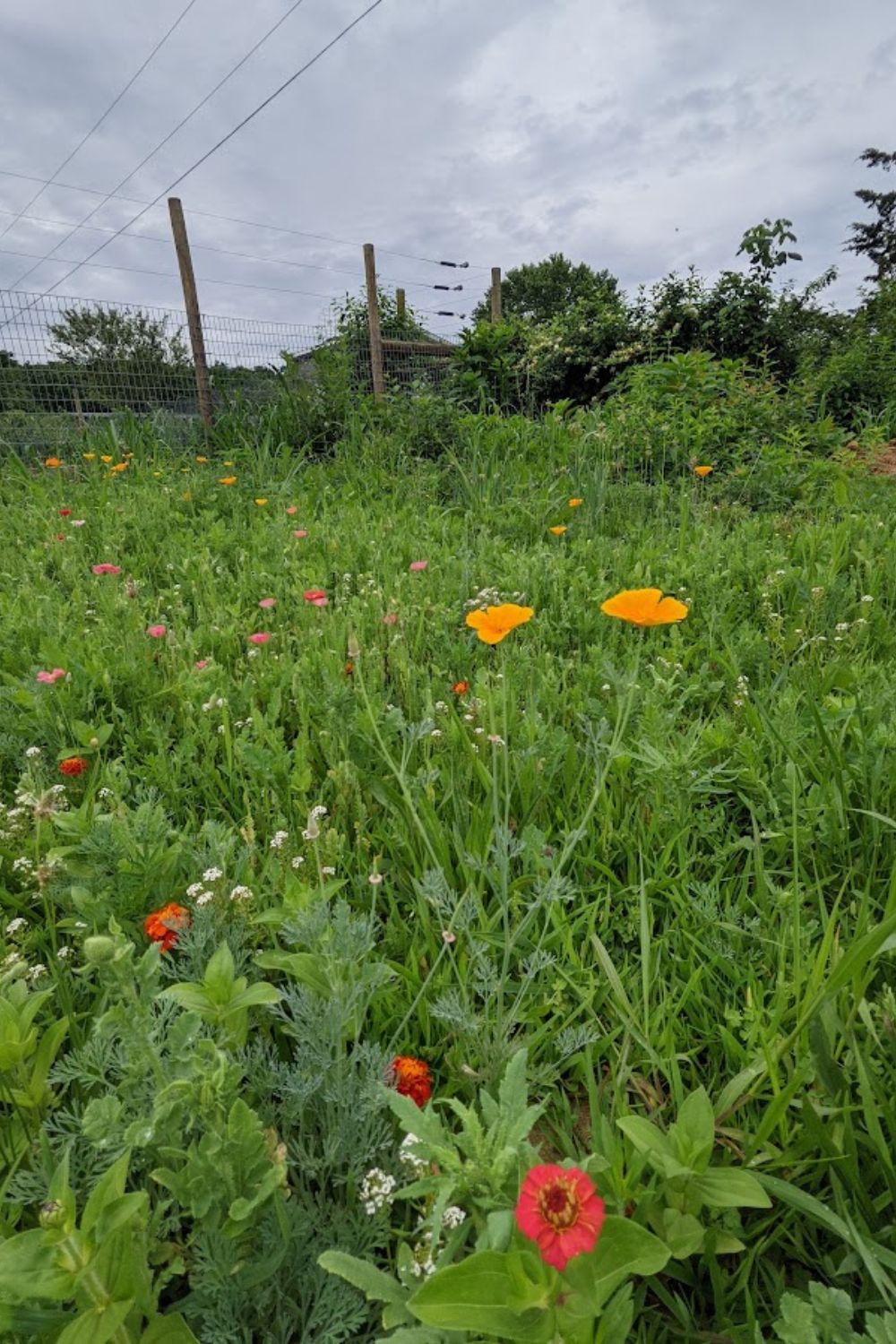
We panted a patch of wildflowers by our long driveway and had beautiful blooms all summer. The sweet alyssum came first, then marigolds and poppies. So many poppies. When the weather turned hot, the zinnias appeared. Above, you can see our first zinnia of the season: a beautiful, deep orange color.
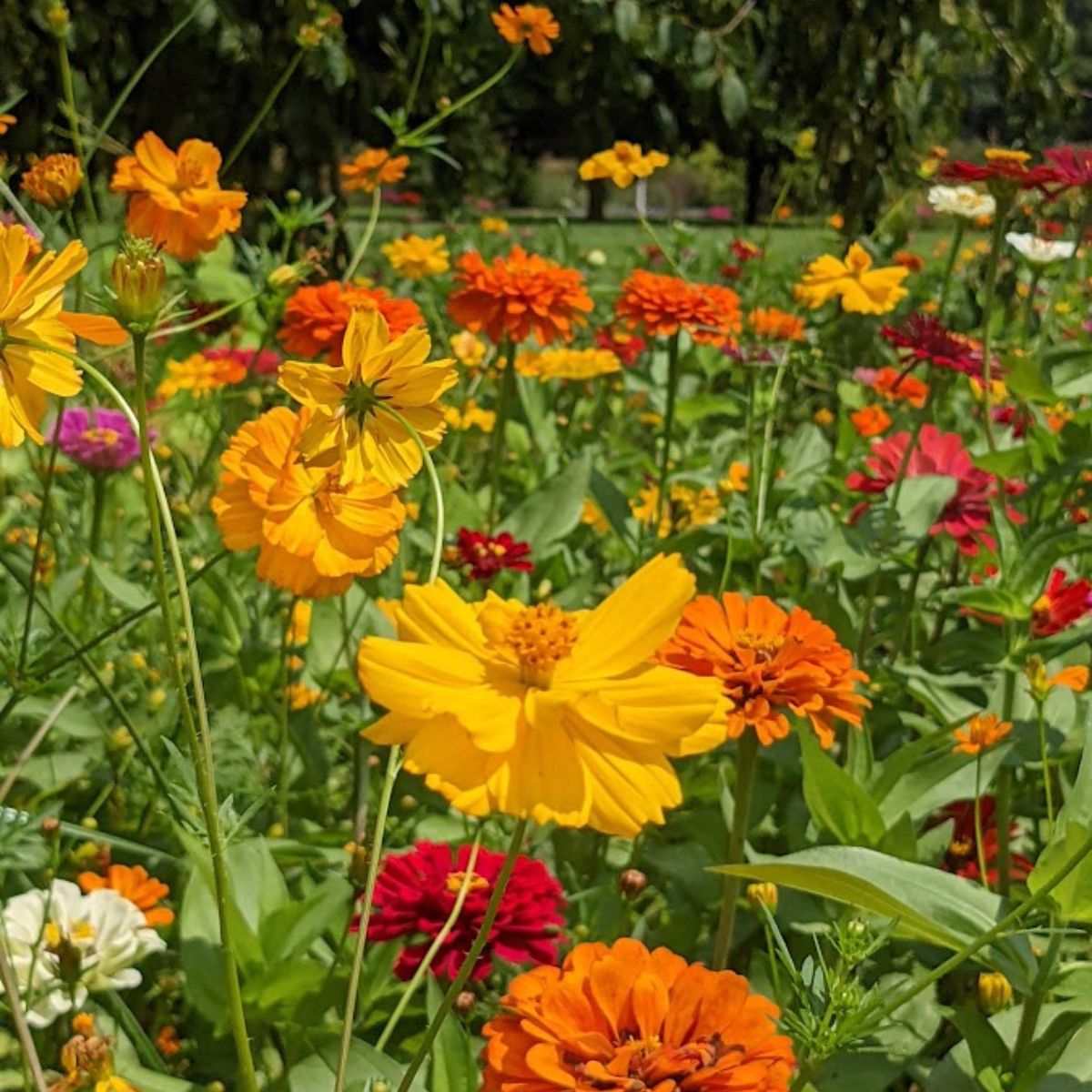
I love this warm-colored mixture of zinnias and the few cosmos mixed in. We took this picture at the Norfolk Botanical Garden a couple of years ago at the end of August. There was a stunning flower field filled with these beauties.
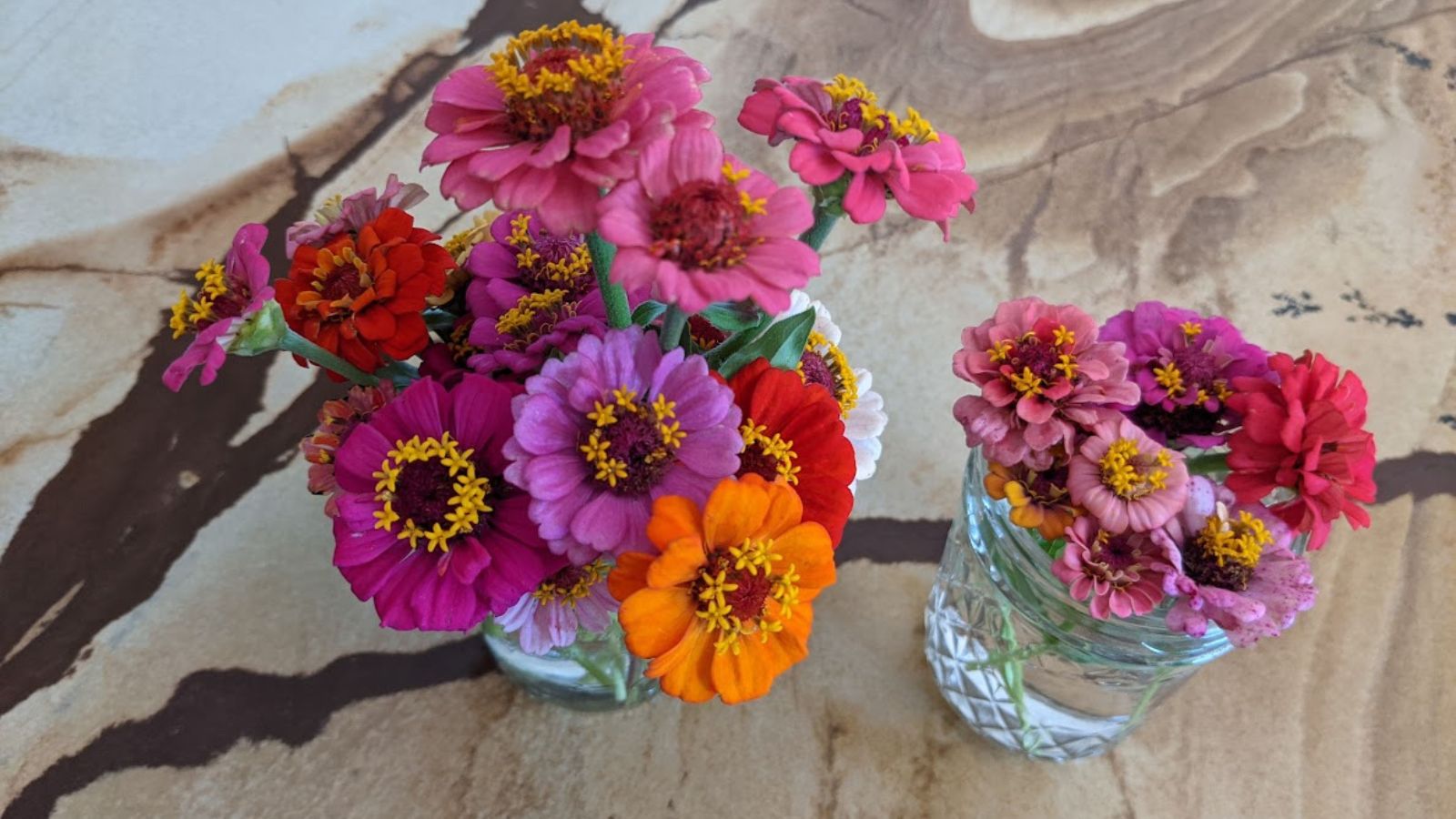
Zinnias are very prolific, so don’t be afraid to cut a few and bring them into your home
(or give them to family and friends). There will be more the following week 🙂
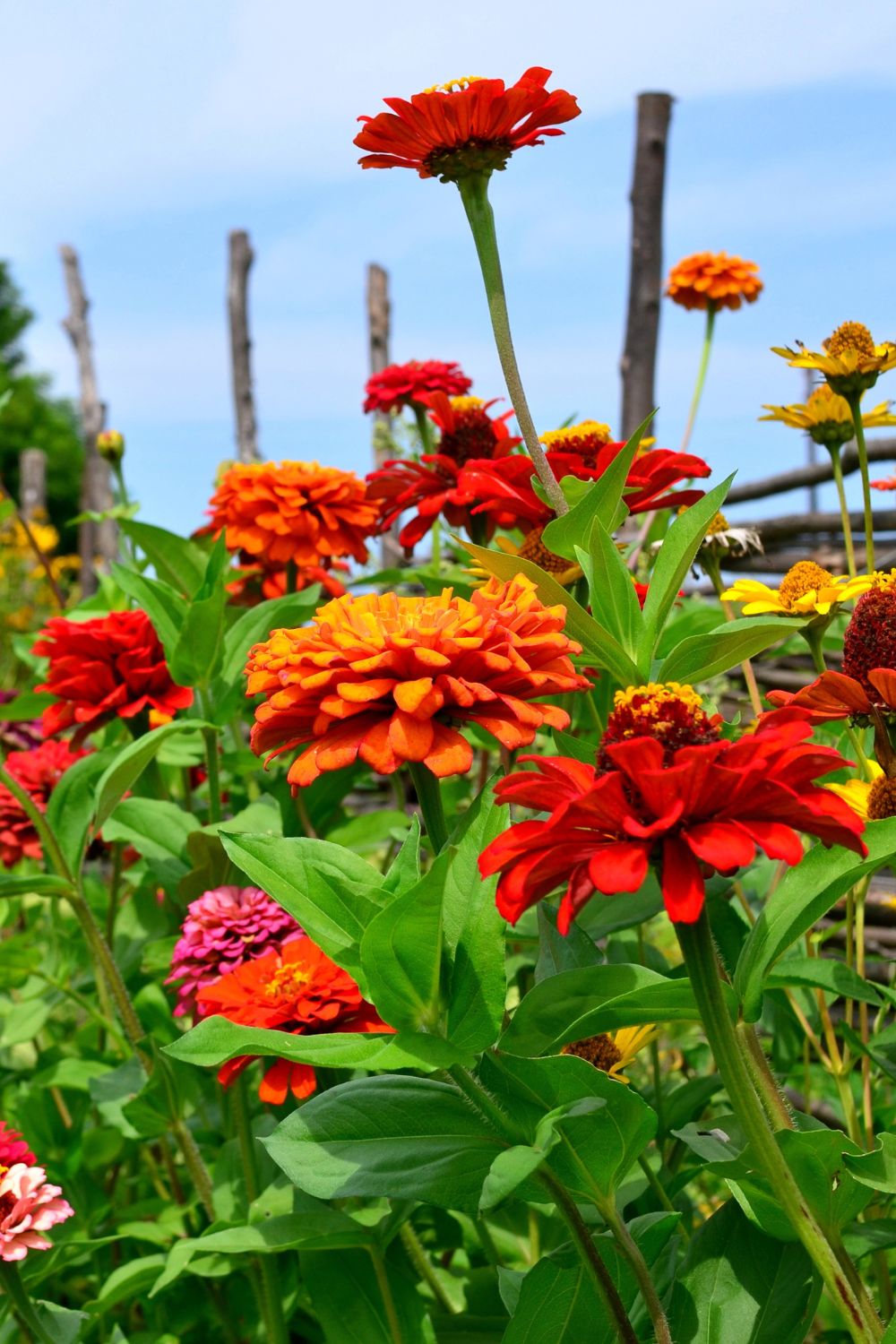
Plant zinnias by a fence. I love the rustic feel of these purple and orange zinnias hugging an old wooden fence.
What kinds of zinnias will you plant in your garden? There are so many colors to choose from and, of course, you can also plant some pure white ones for contrast. So pretty! And so easy to grow!
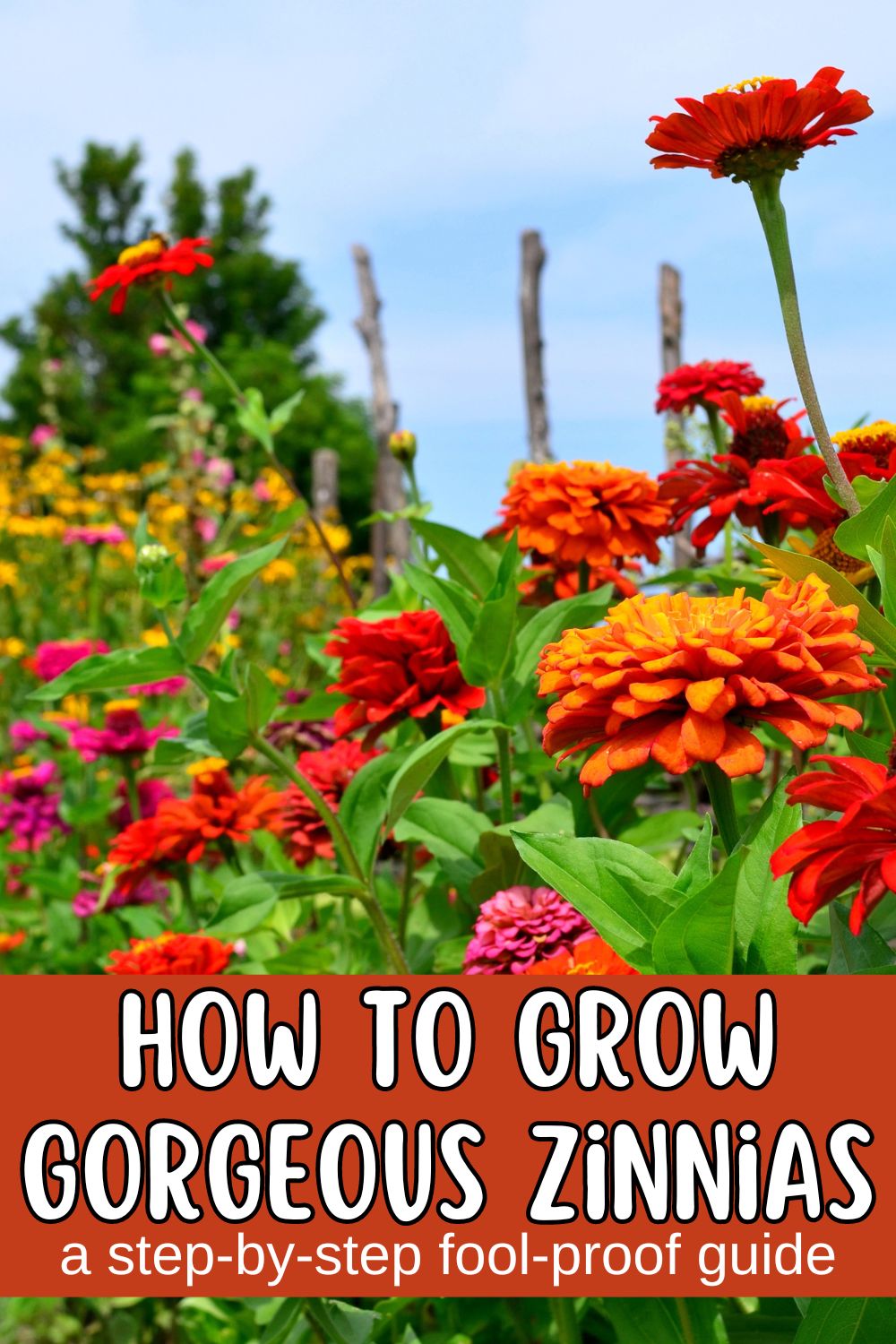

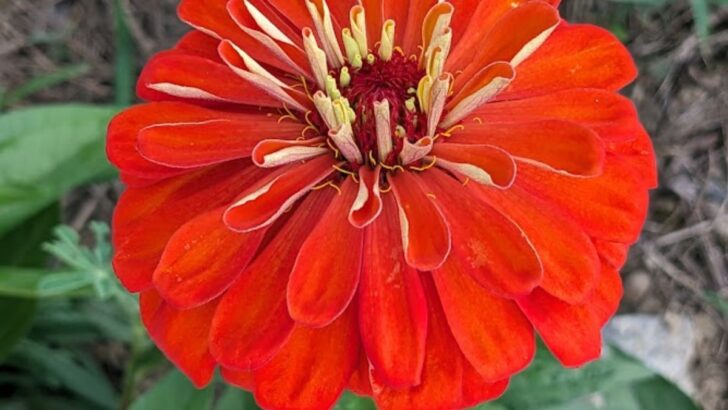





27 Best Plants For A Cut Flower Garden
Sunday 23rd of April 2023
[…] A cut flower garden is hardly complete without some zinnias. They are easy to grow from seed, have long stems, come in a wide variety of vibrant colors, and bloom all summer. Here are details about how to grow zinnias. […]
7 Great Companion Plants For Lavender (And 3 To Keep Away From Them)
Sunday 23rd of April 2023
[…] Zinnias are perfect plants for beginning gardeners and children. Here’s a step-by-step guide to growing zinnias. […]
8 Best Companion Plants For Squash (And 4 To Avoid)
Sunday 23rd of April 2023
[…] cosmos and other prolific flowering plants, like coreopsis, sweet alyssum, calendula, and zinnias (learn more about growing zinnias). These don’t have to be mixed in with the squash and can instead be planted as a colorful […]